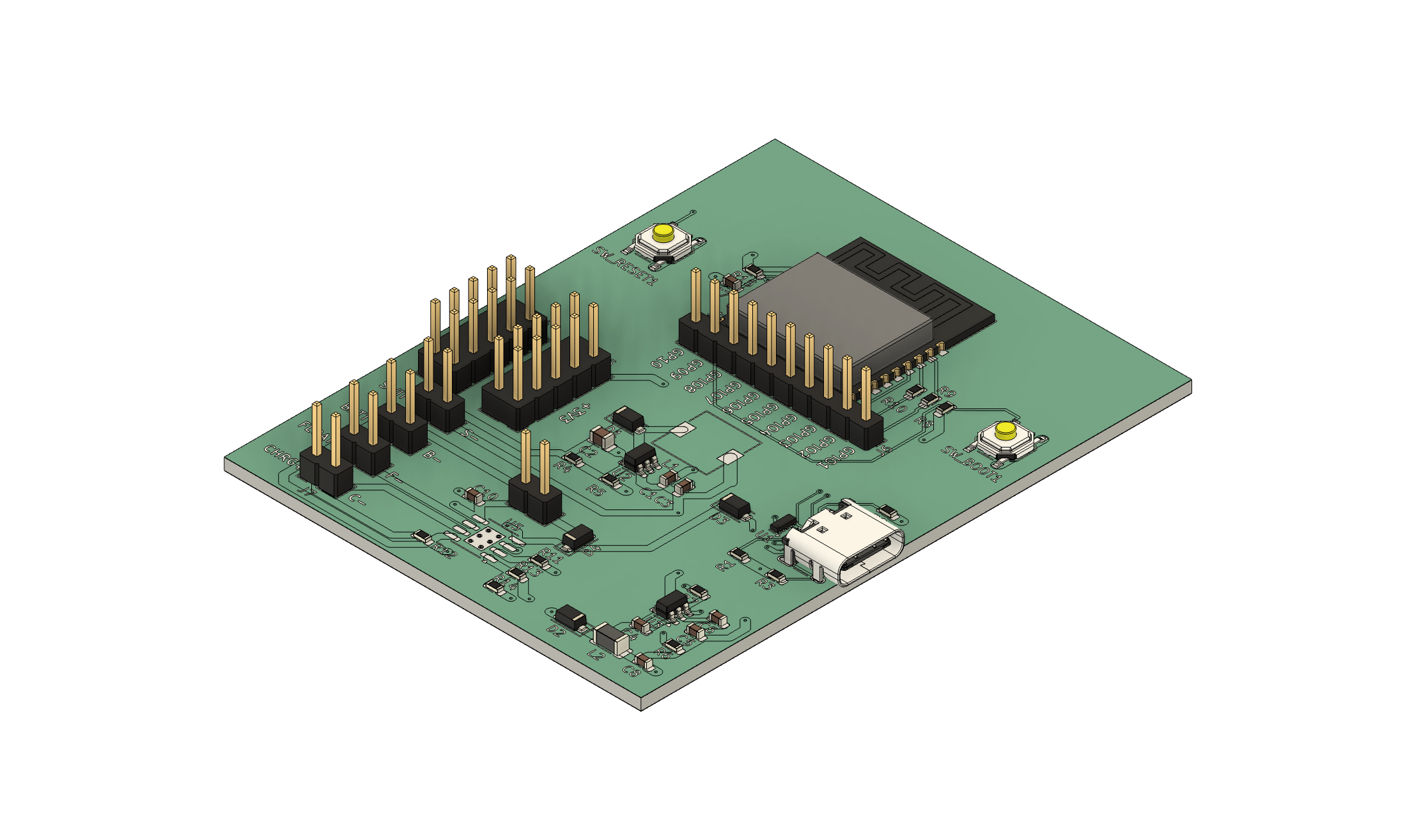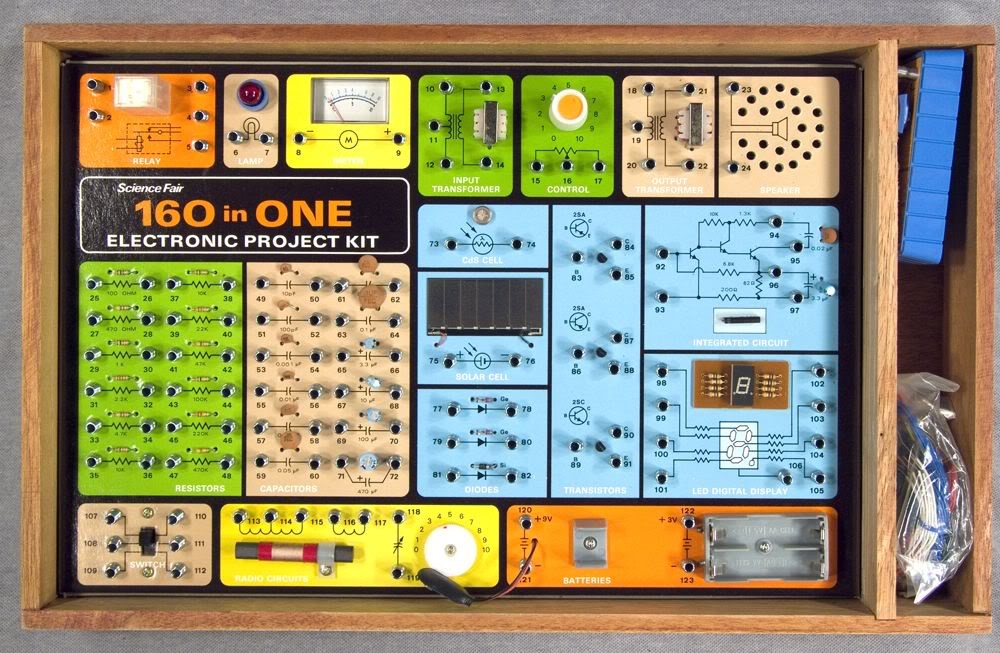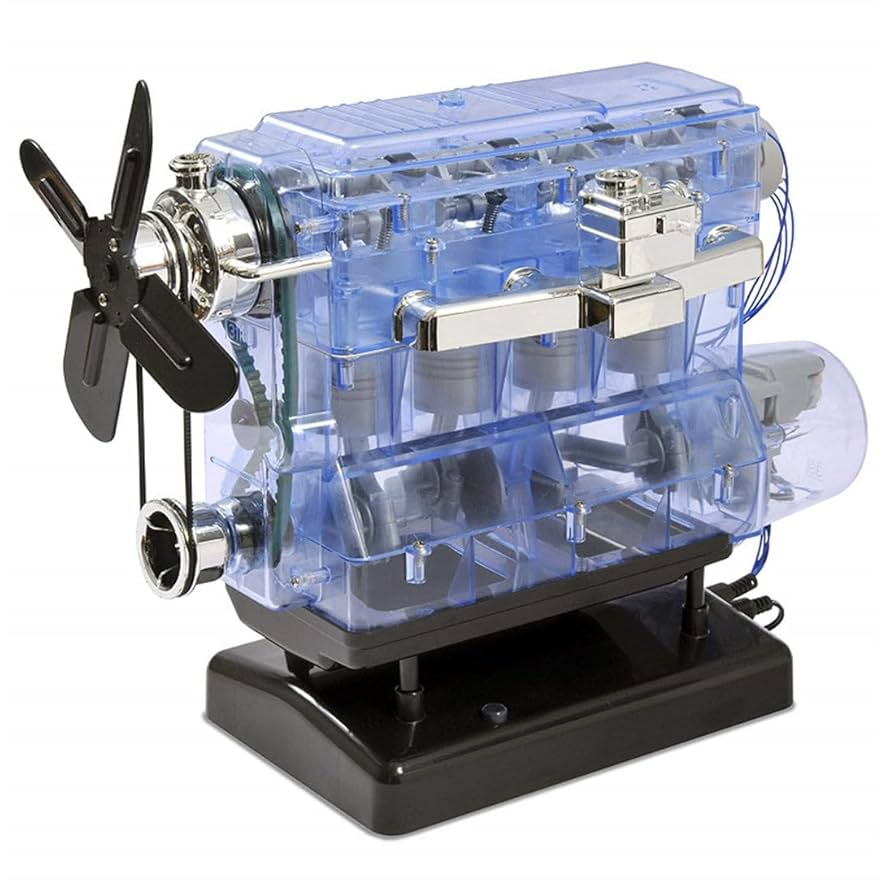
School science is broken. We’re building a STEM toy to fix it.
I wouldn't be a software developer if I didn't go on a bit about the tech stack, so here we are:
- MissionCore board (ESP32-based). We started with off-the-shelf dev boards, but asking 8–13 year olds to breadboard every component was… optimistic. So we designed a custom board with just enough done for you:
- Power from USB-C, 3×AA batteries, or a 3.7V Li-ion pouch cell (depending on the mission).
- Onboard LDOs and buck/boost regulators providing 5×3.3V/GND and 5×5V/GND pin pairs.
- Integrated charging circuit — plug in a Li-ion cell and it charges via USB-C.
- A few built-in 330Ω resistors for LEDs.

This post kicks off a build log of our journey. I’ve been inspired by other indie hacker stories shared on HN, like:
School science is broken. We’re building a STEM toy to fix it.
tl;dr: STEM education is broken. Schools (at least here in the UK) focus too much on cramming endless facts into kids' heads and not enough on letting them explore. We want to fix that by building a new kind of STEM toy.
My name is Jake and I'm a mechanical / software engineer. My partner is Katie, a former secondary school science teacher and user researcher. Together, we're passionate about getting kids into STEM subjects for two reasons:
- STEM has provided us both with a solid career and base with which to build a wonderful, full life.
- Science and technology hold the solutions to almost all of societies' issues. We need more smart girls and boys working on those issues.
(If you know any more, send them to me!)
We'll be documenting the ups and downs as we go. Both as a sort of highlight (and lowlight) reel and so, with a bit of luck, other people can be inspired by this story.
But, why?
By the time I was 15, everyone in my year was agonising over what GCSEs and A Levels to pick, and what jobs they might eventually do. Other than girls, it’s all we really talked about. Most of my peers were struggling, they didn’t really know what they liked.
I didn’t have that problem. I was going to be an engineer, simple as that. My dad was an electrical engineer, and I grew up in a mix of apprenticeship and indentured servitude. By fifteen I could wire a plug, operate a wood lathe, and rebuild the engine of my Suzuki LT80 quad bike.
Part of this indoctrination was the gifts I had been bought. Twenty years later, three stand out:
- A box with '101 circuits' somewhat similar to this one, but with a little more 90s plastic. This was incredible, you could build everything from an AM radio to a walkie talkie. All you had to do was connect one spring to another with a wire!

- A Haynes 'build your own engine' toy which is still very popular today. I actually ended up buying the same thing for my little brother when he was around the same age and he went on to become a truck mechanic. He still talks about the time we built the engine today.

- And finally, a wireless motion detection sensor with a receiver unit. This one was super cool because I used to hide it on the stairs to alert me when my dad was coming to check on me, meaning I could hide my book or turn off the playstation. (NB: I used to stay up late and read books then not get up for school.)
What made these toys extra special though was that my dad took the time out of his busy day to build them with me, explaining what each bit did and the concepts as we went along. It was like having my own personal ChatGPT way back in the 90's.
All this worked to spur my curiosity and ultimately meant that by the time career options came along there really was no choice, I was going to build stuff!
That’s what makes me think STEM toys today (and, honestly, a lot of teaching too) are missing something fundamental:
- Schools teach facts without the context to use them.
- STEM toys hand you paper instructions without the “why,” turning curiosity into boring old IKEA assembly.
So the real question is: how do we spark that same curiosity for kids who don’t have a technical parent around to guide them? How do we make STEM feel accessible to every kid, including the ones who’ve been told “it’s not for them”?
What we're building
I'm going to skip the sales pitch 'synergy' type stuff here, and get right down to brass tacks.
Core Principles
- Real components. No watered-down “magnetic circuit builders” here. Kids will use actual switches, PCBs, sensors, and batteries. The same stuff you can buy from places like PiHut.
- Explain the why. Every step comes with context. What’s a resistor? How does an ultrasonic sensor detect motion? What’s actually inside a battery?
- Hackable by design. Our kits are built around the standard ESP32 board. We’ll walk kids through building, say, a wireless intruder alarm, then hand them the code and show them how to change it. If the end result is they tear it all apart and turn it into a robotic arm, that’s mission accomplished.
- A compelling narrative. My biggest gripe with STEM toys is that the all say they're “STEM toys.” How boring is that? With Inventronix, you’re not just building circuits — you’re defending a safehouse from enemy spies or building a weather station to secure our Mars mission.
Tech Stack
The idea is to remove the need for soldering in the first instance, just plug in your jumper cables and off you go.
- 3D printed enclosures. Every mission comes with its own printed case and parts. Printing keeps startup costs low and lets us iterate quickly. We can design, test, and release new missions without waiting on tooling.
- The app. We debated avoiding screens, but the app unlocks two big wins:
- It meets kids where they already are (on iPads).
- It gives us a richer way to teach. Animated build instructions, interactive content, and context are things paper manuals just can’t deliver. Here’s an early screenshot of the animated build flow.
NB: There are rules with the app:
- There are no in-app purchases. Never will be.
- All content is freely available on both the app and on our website, whether you purchased a kit or not.
- Users create a username and password to sign up. No names, no emails, no tracking, ever.
Status & Launch Plan
As of right now
- MissionCore: designed, manufactured, and tested - ready to ship!
- App + website: mostly up and running, powered by a simple headless CMS I built (this blog is running on it).
- Mission 001: enclosures designed and tested; content and animations in progress.
- Packaging: first draft complete - heading to the printers this week (turns out boxes are weirdly expensive).
Going forward
Our plan is to launch on kickstarter. However, one of the biggest lies you're told as an engineer is 'build it and they will come', they absolutely will not. So we're trying to build a social media following pre-launch.
The big hurdle is certification. Marketing to kids + custom PCBs means we can’t self-certify for CE. We’ll need EN-71 certification in the UK/EU and (something else?) for the US. Honestly, we’re still figuring this out. If you know someone who can help us navigate certification without killing a bootstrapped budget, drop me a message: jake@inventronix.club.
I'm super passionate about this in all the best ways, and I really hope it succeeds. Please follow us on socials or sign up to our mailing list for future updates!
P.S. I haven't built sub-lists into bullet points on my little CMS yet, so sorry about the bad formatting!